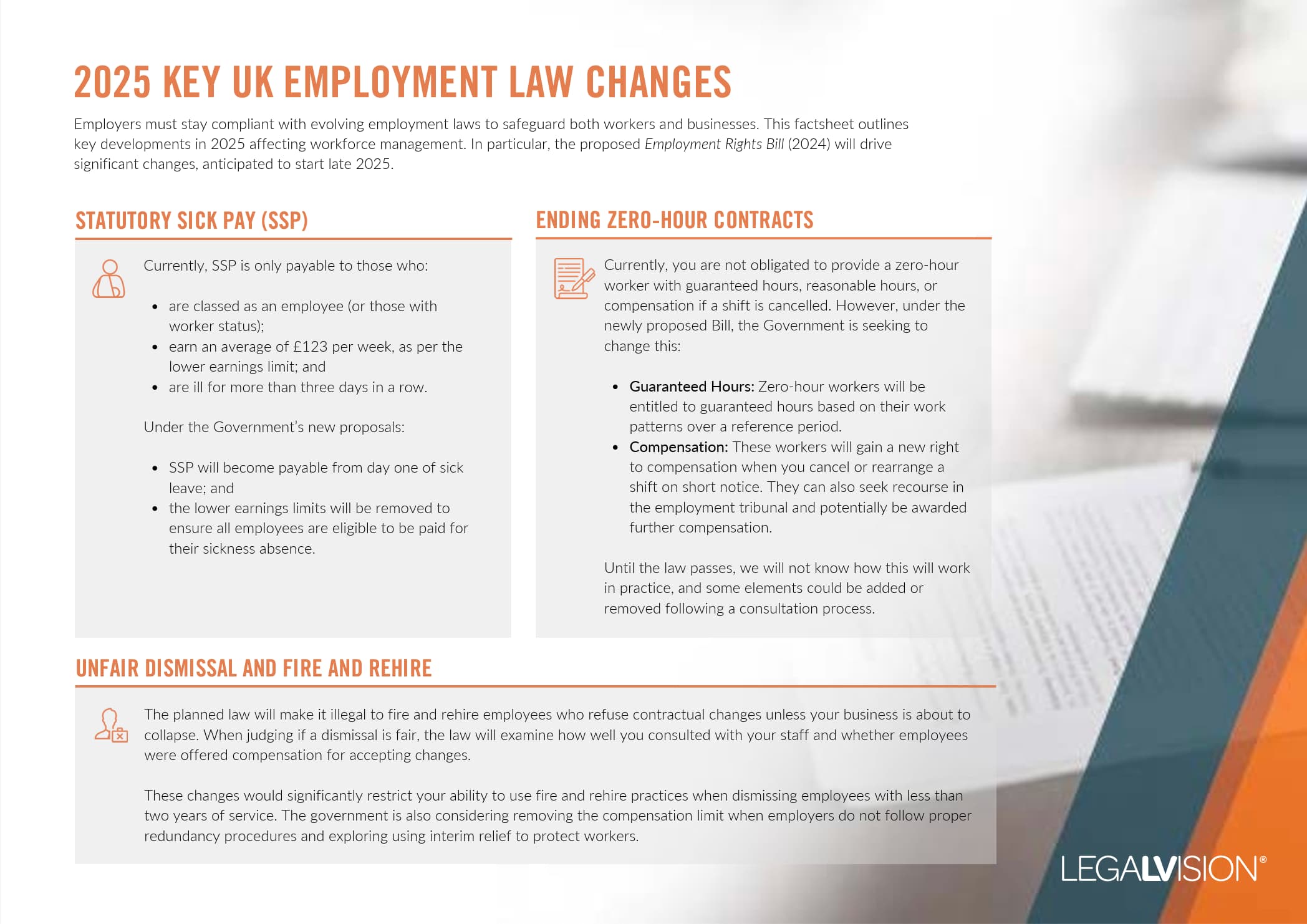In Short
- Victimisation is workplace discrimination: It occurs when someone is treated unfairly because they were involved in a discrimination or harassment complaint.
- The Equality Act 2010 makes it illegal: Employers must not retaliate against employees who carry out or plan to carry out a ‘protected act’.
- Employers must act fairly and confidentially: Allegations should be investigated thoroughly, using a formal grievance process if needed.
Tips for Businesses
Train your team on the risks of victimisation and how to handle complaints fairly. Use a clear grievance procedure, apply relevant policies, and keep thorough records. Responding calmly, confidentially and consistently can help prevent tribunal claims and protect your business.
When you run a business and employ staff, you are likely to have to deal with issues among colleagues in the workplace. You may also have to deal with allegations about your employees or even you as the employer. This may include allegations about victimisation in the workplace. It is crucial that you understand the law on this and how to deal with accusations to avoid a claim at an employment tribunal. This article explains victimisation in the workplace and how you can prevent an allegation of victimisation.
What Is Victimisation?
Victimisation is a type of discrimination in the workplace. It is where a person suffers a detriment because of their involvement in a complaint about harassment or discrimination. Harassment and discrimination are illegal in the workplace where they concern:
- race;
- sex;
- disability;
- pregnancy and maternity;
- religion or belief;
- age
- sexual orientation;
- gender reassignment; or
- marriage and civil partnership.
A detriment for victimisation could be either or both of the below:
- treating the person worse than you previously treated them; and
- making the person’s situation worse.
However, victimisation is not the same as bullying. Being treated less favourably through victimisation can include:
- leaving a person out;
- preventing a person from doing something; or
- calling someone a troublemaker.
Is Victimisation Legal?
As victimisation is discrimination under the Equality Act 2010, it is illegal to do it in the workplace. It is unlawful to victimise someone in the workplace where the person has carried out or intends to carry out a ‘protected act’. It is also illegal to victimise if, when doing so, you believe that your worker intends to carry out a ‘protected act’ even if they have not.
A ‘protected act’ means the person has taken some action, which means they are involved in harassment or discrimination. This includes:
- making the complaint;
- supporting another’s person’s complaint;
- gathering information that could become a complaint;
- offering themselves as a witness for another person’s complaint; or
- providing evidence for a complaint or voicing something that fails to support the person making the complaint.

This factsheet outlines key developments in 2025 affecting workforce management.
When Is a Person Not Protected From Victimisation?
Although victimisation in the workplace is illegal, there are times when the law does not protect a person from being victimised. This is where they act maliciously when supporting a complaint of harassment and victimisation. The law, therefore, protects people from victimisation when they act in good faith. A person acting maliciously is where they:
- provide false evidence; or
- purposely lie that discrimination or harassment has taken place.
What Should I Do if Victimisation Takes Place?
If victimisation occurs in your workplace, your employees will likely raise it as an informal or formal complaint. Naturally, it will be easier to resolve informally, but if you feel the victimisation is too severe to be dealt with informally, you should suggest that it is dealt with formally.
A good way of dealing with victimisation informally is holding a meeting with all involved.
Whichever way you decide to deal with victimisation, you should ensure it is kept confidential, and you should keep an open mind. You must take all allegations seriously and carry out a full and thorough investigation, ensuring that your process is fair. This will help you avoid a potential claim in an employment tribunal.
A full and fair procedure could mean:
- following your business’ formal grievance procedure;
- applying any workplace policies relating specifically to victimisation, harassment or discrimination; and
- keeping written records of your actions and any discussions.
Key Takeaways
Victimisation is an illegal form of workplace discrimination. It involves the victim experiencing a detriment because of how another person treats them due to their involvement in a harassment or discrimination claim. Harassment and discrimination are illegal in the workplace, where it involves any one of the nine protected strands. Victimisation is unlawful if the action taken is in relation to discrimination or harassment, for example, supporting another person’s complaint or providing evidence against it. However, if the person being victimised acts maliciously, they are not protected by the law. If victimisation occurs, you, as an employer, must deal with it seriously and in confidence. The complainant may wish to deal with it informally or formally, requiring you to follow a full and fair procedure such as your grievance procedure.
If you need help understanding whether you can sue in the UK, LegalVision’s experienced employment lawyers can assist as part of our LegalVision membership. For a low monthly fee, you will have unlimited access to lawyers to answer your questions and draft and review your documents. So call us today at 0808 196 8584 or visit our membership page.
Frequently Asked Questions
Victimisation in the workplace is when a person suffers a detriment through treatment by another because they are involved in a discrimination or harassment complaint.
Victimisation is illegal in the workplace providing the person carrying it out acts in good faith.
We appreciate your feedback – your submission has been successfully received.











